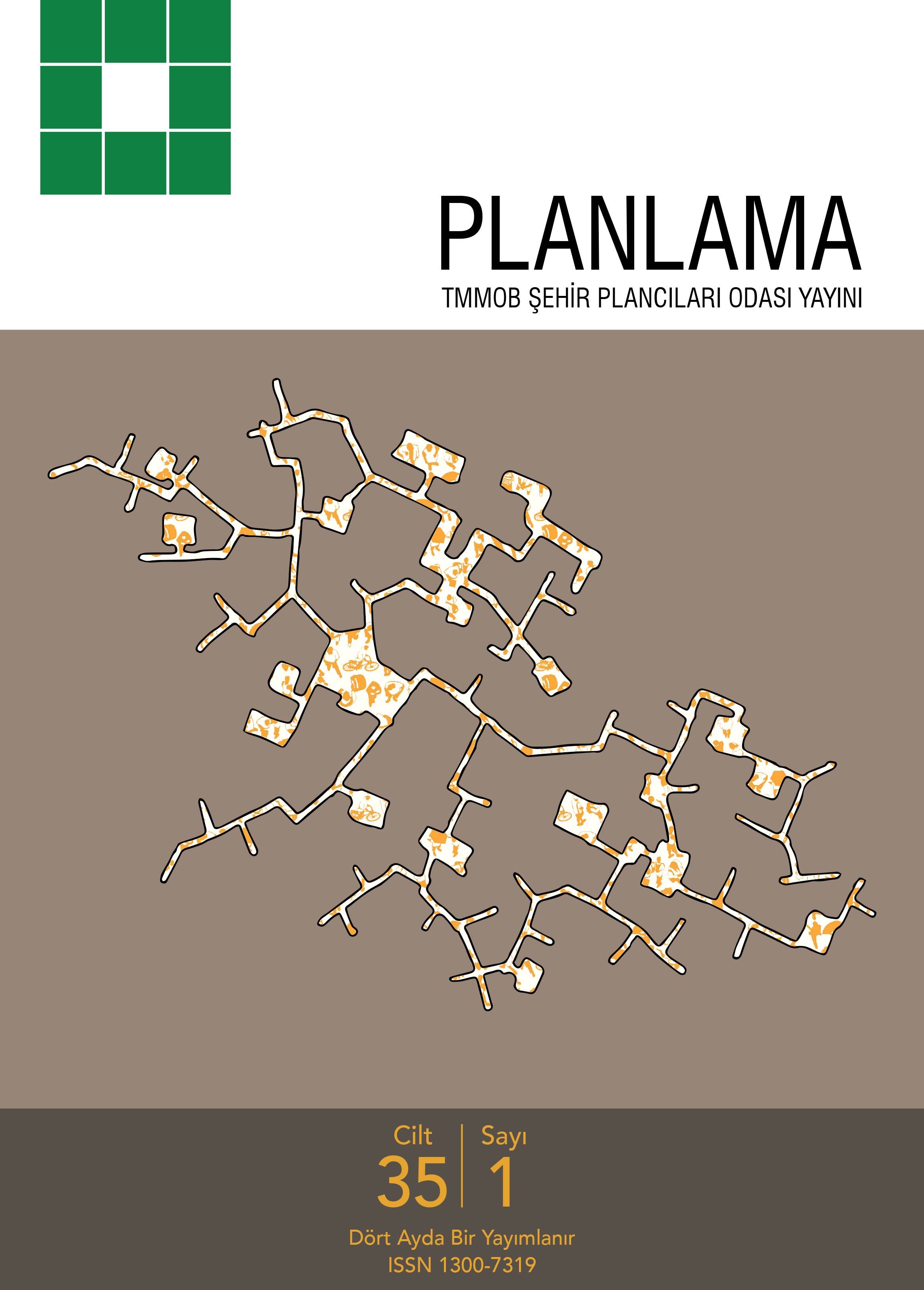Immaterial Dimensions of the Right to the City: The Case of Istanbuls Derbent Neighborhood in the Urban Transformation Process
Gizem Aksümer1, Hakan Yücel21Department of Urban and Regional Planning, Mimar Sinan Fine Arts University, Istanbul2Department of Political Sciences, Galatasaray University, Istanbul, Turkey
The main objective of this article was to discuss the concept of the right to the city using the example of a gecekondu settlement, sometimes referred to as a squatters neighborhood or a slum, that is part of a transformation project. The article primarily emphasizes the importance of the immaterial and empirical dimensions of the concept of the right to the city. Within this context, the theoretical part of the article is based on the Lefebvrian concept of the right to the city, which may be explained as the right to live anywhere one wishes to live and/or to decide ones own future.
Starting from this point, a study of Istanbuls Derbent neighborhood, a gecekondu neighborhood undergoing an urban transformation process, was conducted. The goal was to seek tangible information on how the inhabitants of the gecekondu neighborhood were currently living and how they wish to live in the future. Additionally, how the urban transformation process is progressing in the opposite direction for this area is illustrated. The findings revealed that Gecekondu inhabitants have a strong sentiment of belonging to the place. They are emotionally attached to the location and to their neighbors. These emotional, intangible, and invisible dimensions of place attachment are very important components of the right to the city.
Kent Hakkının Maddi Olmayan Boyutları: Kentsel Dönüşüm Sürecindeki İstanbul Derbent Mahallesi Örneği
Gizem Aksümer1, Hakan Yücel21Mimar Sinan Güzel Sanatlar Üniversitesi, Şehir ve Bölge Planlama Bölümü, İstanbul2Galatasaray Üniversitesi, Siyaset Bilimi Bölümü, İstanbul
Bu makalenin temel amacı, kent hakkı kavramını kentsel dönüşüm tehdidi altındaki bir gecekondu mahallesi üzerinden tartışmaktır. Makale, temel olarak kavramın materyal olmayan, ampirik boyutlarının altını çizmektedir. Bu bağlam içinde makalenin teorik kısmında Lefebvrein ortaya attığı, bireyin istediği yerde yaşama ve kendi geleceğine karar verme hakkı olarak da anlaşılabilecek kent hakkı kavramı tartışılacaktır.
Bu noktadan hareketle, kentsel dönüşüm tehdidini deneyimleyen İstanbul Derbent mahallesinde bir araştırma yapılmıştır. Bundaki amacımız, gecekondu mahallesindeki insanların nasıl yaşadıklarını ve gelecekte nasıl yaşamak istediklerini araştırmaktı. Buna ek olarak bu makale, mevcut kentsel dönüşüm ihtimalinin mahalledekilerin taleplerinin aksi yönde işlediğini göstermeyi amaçlamaktadır. Dolayısıyla makale iki temel izleğe sahiptir. Öncelikle, Derbent mahallesinde yaşayanların nasıl bir hayat tarzına sahip olduğu anlaşılmaya çalışılacak, ikinci olarak mahalle sakinlerin gelecekte nasıl bir mahalle hayal ettikleri aktarılacaktır. Bulgular, mahalle sakinlerinin çok güçlü bir mekansal aidiyet hissine sahip olduklarını göstermektedir. Saha araştırması tespitlerimize göre Mahalle sakinleri mekâna ve komşularına duygusal bağlılık içindeler. Biz de bu makalede, mekâna bağlılığın bu duygusal boyutlarının kent hakkının çok önemli birer parçası olduğunu tartışmaya açıyoruz.
Manuscript Language: English













